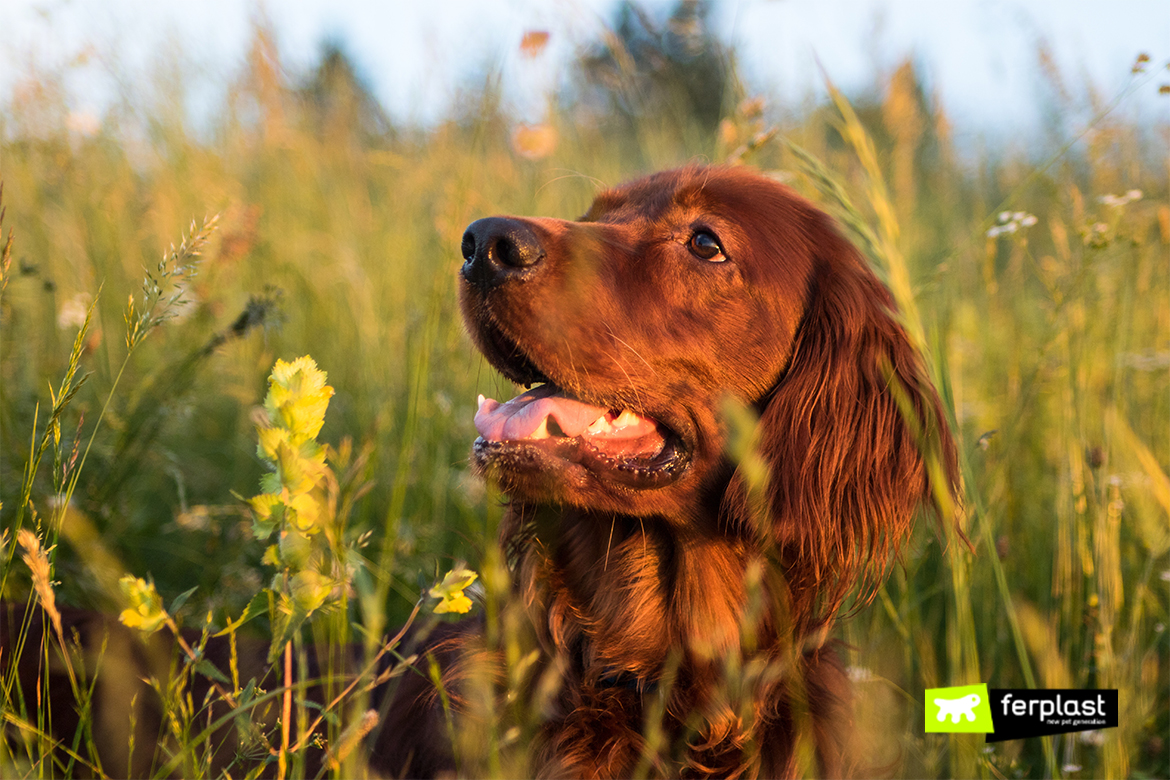Springtime allergies also affect dogs. On the one hand, Fido’s desire to be outside in the open air grows when the good weather arrives, but on the other hand, it brings with it numerous problems like ticks, fleas and other ailments. Let’s take a look at how to recognise the symptoms of allergies and how to prevent and treat them.
We had already spoken about allergies that affect cats in the springtime and, quite similarly, these also affect Fido. The origin of this problem is unclear, although there is a strong suspicion about there being a genetic predisposition.
There are various main causes provoking allergic reactions in our dogs: the substances contained in insect bites, in some foods, drugs, plants and grasses, dust mites, pollen, fungus spores and even flakes of our skin.
Springtime allergies usually affect the skin, the respiratory tract and our four-legged friend’s gastrointestinal system. For this reason, the symptoms that we need to pay careful attention to are: serious dermatitis causing terrible itching to our furry friends, sneezing, breathing difficulties, coughing, vomiting and diarrhoea.
The most common canine allergy is that to fleas and ticks. We notice this right away, because our dog tends to scratch himself in the ear area, on his paws and around his eyes and mouth, sometimes causing skin lesions that become infected and take a long time to heal. We can limit this problem by using a preventive treatment based on antiparasitic products.
Another risk that can occur in the springtime is that of pollens: these are airborne and can irritate our dog and cause his eyes to swell. It is wise to take your daily walks in the park in the early morning or late in the evening, when the pollen count in the air is lower. Ears of wheat can also be harmful because the sun and heat tend to make them flake and your dog can unwillingly breathe them in.
How can you prevent allergies in the springtime? A little good sense is all you need to keep your furry friend in good health and fight the most common springtime allergies. Your dog’s hygiene is very important and, therefore, always try to clean his paws and brush his coat after a walk. Bath him 2-3 times per week during this period, using a gentle shampoo.
Some breeds are more prone than others to developing allergic reactions: those with a more delicate white coat tend to have skin allergies, like the West Highland White Terrier, the Bull Terrier and the English Setter, while dogs like the Golden Retriever have a higher probability of being affected by gastrointestinal allergies.
We would like to remind you that if you suspect that your dog may be suffering from an allergy, it is always best to consult your vet, who will be able to identify the cause of this reaction and suggest the most suitable treatment!




